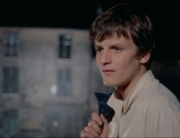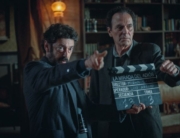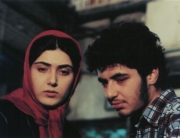Renowned filmmakers often can count at least two or three entries in their filmographies to stir the debate: Which of their films is the best? And when we talk about great directors with movies worthy of being recognized among the “greatest films of all time,” the discussion won’t be quickly settled. Hitchcock had Vertigo, and still you can argue how equally essential North by Northwest and Psycho are until the end of time.
Orson Welles, though, is a unique case. For many, his work starts and ends with Citizen Kane, and that’s it. It was a case of a young talented artist reaching his peak early at 24, and who never fulfilled his promise that came with that glimpse of greatness. This is a cruel and unfair perspective. His Kane is a peak in film history that not many filmmakers have been able to reach. For this reason, the documentary The Eyes of Orson Welles becomes immediately a key piece to understanding Welles’s artistry as a vast universe beyond a sole masterpiece.
Mark Cousins’s biographic approach on Welles (the artist, mainly, and not so much the man) is not exactly orthodox but in keeping up with the unconventional man that Cousins portrays. Many aspects stand out in the special way the filmmaker deals with his subject. In the first place, Cousins’s narration is a passionate letter to Welles, with direct questions to the recipient. The text is poetic and engages you in a surreal state more relatable to a novel with a distinctive stream of consciousness.
Cousins uses Welles’s biography as an excuse to stop and admire pieces of his work. Scenes of every Welles movie (from The Magnificent Ambersons to F for Fake) are interwoven with his artwork (most of it previously unseen publicly) and visits to the actual places that were important in Welles’s life or used as a location in some of his films.
The same enigmatic photo of Welles appears on screen repeatedly. He looks young, leaning on a bed with his cheek upon his hand. The mouth is open, the hand covers part of his face, the pose is playful, and he has a sensual look with his wide open eyes. This image (see above) is like a challenge or an invitation to understand this peculiar man who once was a radio star, a stage director of revolutionary theater, and a “boy” genius excelling in a visual art form that was still discovering its endless possibilities.
In contrast to Welles’s Kane, Cousins’s Welles doesn’t need testimonies to complete the puzzle of the man (though there are brief appearances by Beatrice Welles, one of his daughters). The method to find Rosebuds is through the observation of Welles’s lesser-known work: his collection of sketches and paintings. These drawings are visually as striking and compelling as the superb compositions in his movies.
Cousins’s observations are never dull or obvious, though his flattery and praise and his sincere declarations of love would probably have inspired some laughs in the cynical and petulant man that Welles was, according to peers and contemporaries. It’s particularly endearing when Cousins affirms that now would have been a perfect time for Welles to make movies due to technological improvements. Cameras are more portable and easy to handle, like a pencil in the hands of a painter, which Orson also was.
Some brief moments focus on Welles personal life (love relationships with women, intense friendships with men) that don’t deviate attention from the important stuff. The Eyes of Orson Welles pleasantly inspires you to take a second look at Welles’s films and admire a legacy that goes beyond Citizen Kane. It’s a necessary reminder that one undeniable masterpiece shouldn’t be the only prism to behold a substantial artist, who never restricted himself exclusively to one art form.







Leave A Comment